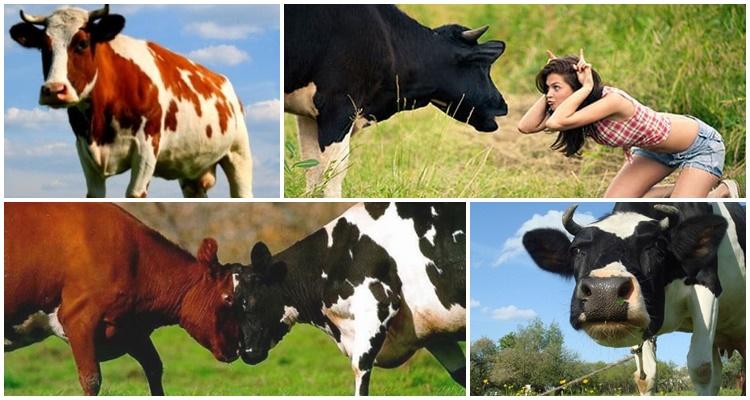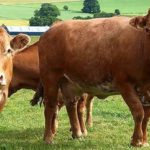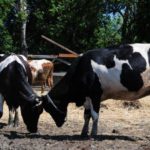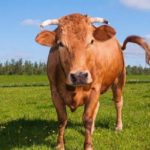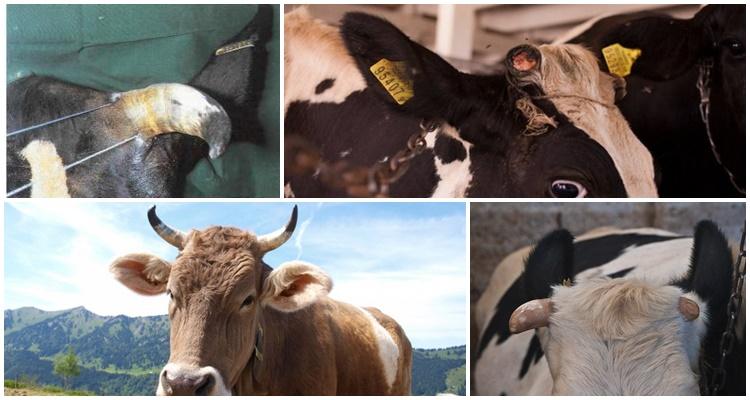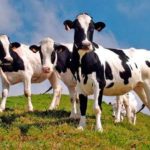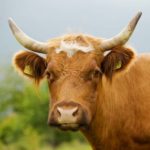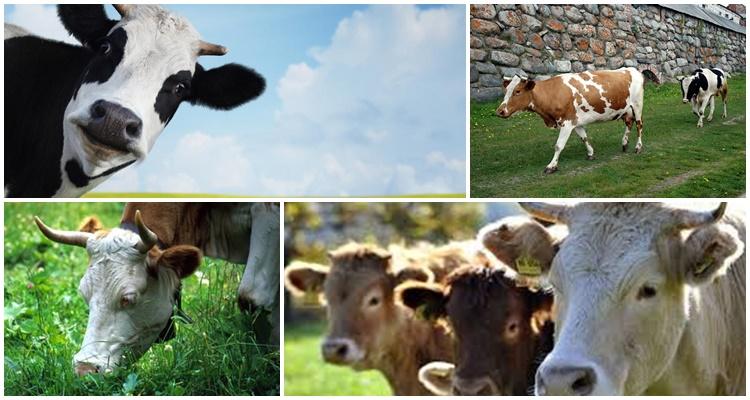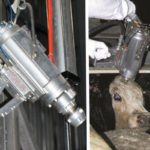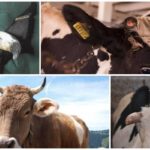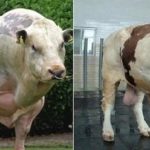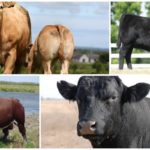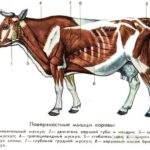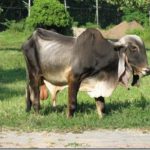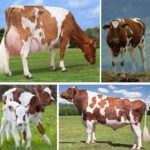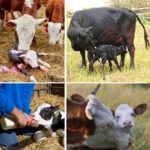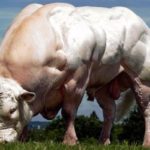Peacefully grazing cows give the impression of slow and measured animals. In fact, cattle do not always have an easy-going disposition. When arrogant cows and bulls butt heads, it becomes a real problem for the herd, owners and farm workers. The first thought is to get rid of an inconvenient animal, but there are proven methods that can correct violent behavior and reduce the degree of aggression.
Why does a cow butt?
Horns are a natural weapon of defense for an animal, which helps it defend itself in the event of an attack by predatory animals and defend its place in the herd. People have been taming livestock for centuries, softening the severity of natural instincts.
Domesticated cows and bulls, whose lives have become calm and measured compared to living in the wild, began to use their horns less frequently for their intended purpose. A lively cow disturbs the peace of its relatives and can pose a serious danger to others.
Livestock alertness can occur as a result of the following circumstances:
- Intuitive protection. It is typical for recently calved cows, who intuitively feel that the calf is in danger. A similar defensive reaction is sometimes observed in animals that are surrounded by a large number of people, accompanied by noise and harsh sounds.
- Upholding authority. Relationships between animals in a herd are not always easy. Young animals are often oppressed, bulls and cows compete with each other. In the struggle for a place in the sun, the first thing that comes into play is the horns.
- Violent character. Aggression that occurs without obvious reasons is often inherited from the parents, which is important to consider when buying a cow or bull. In this case, it is difficult to tame an obstinate animal without violent methods.
Having analyzed the situation, it is easier to develop a behavior strategy. If the conditions are truly uncomfortable for a particular animal, the situation can be corrected by eliminating the cause of the concern. Sometimes the cow refuses to enter the stall and resists by goring and kicking.In such a situation, the reason may be trivial - a stuffy or uncleaned barn causes resentment from the cattle.
In cases where it is not possible to identify a provoking factor or there are no obvious reasons for aggression, they resort to various methods that have proven effective in practice.
How to stop a cow from butting
Methods of pacifying lively livestock can be divided into humane, violent and radical. The first option is less painful, but not always effective. The following will help you stop a cow or bull from butting, reducing the damage:
- mechanical devices and structures for horns;
- sawing off horns;
- cauterization of horns at an early age;
- physical impact on pain points.
Each method has advantages and disadvantages, requiring moderation and a rational approach on the part of breeders.
Cut off the horns
This method, not the most humane, but effective, has become most widespread. The essence of the horn cutting procedure is as follows:
- the absence of sharp ends reduces the likelihood of injury to others;
- discomfort during the healing period of the cut weans the animal from its usual behavior.
The ends of the horns are usually cut off with a hacksaw, having first securely fixed the cow's head. The procedure is painful for the cattle, as is the resulting wound. The cut site is treated with an antiseptic and covered with a thick cotton-gauze bandage, which is tightly fixed to the horns.
A cut along the passage of large vessels is accompanied by bleeding. In this case, a multi-layer pressure bandage is applied to the pulsating stream of blood. After the bleeding stops, the bandage is carefully removed. Areas with dried dressings can be soaked with peroxide or left without tearing them off. Later, the remnants will fall off on their own.
A fresh wound causes pain to the cattle, which sharply intensifies when goring is attempted. Instinctively, cows and bulls begin to avoid painful movements. During the period of healing of the cut site, usually, as a result of self-preservation, a reflex is developed, and the animal stops butting. Complete dehorning is possible at an early age. The calves' horns are gradually burned, preventing growth.
This radical method eliminates the problem of vigilance, but deprives polled cattle of the ability to hold the defense and win an honorable place in the herd.
Place shock absorbers on the tips of the horns
The method of creating artificial protection for the tips of the processes is rightfully considered the most humane of the existing ones. The effectiveness depends on the behavioral type and degree of aggressiveness of the cow or bull. Caps or rings made of thickened rubber are put on the sharp ends of the horns and firmly fixed. You can make similar shock-absorbing attachments from a thick-walled rubber hose. The main task is to ensure strong fixation of the shock absorber. It will not be difficult for a cow to remove the protection if the fastening is weak.
Blindfold
A blindfold that limits vision is suitable if cattle are aggressive towards specific stimuli. Not seeing the object to attack and feeling the restriction in visibility, the animal behaves calmer.
Leather or rubber eyecups are also used to narrow the field of vision. Poor visibility reduces the likelihood of an irritating object being noticed by a disoriented cow. A horse halter is also used, putting it on the head of the animal and tying it to a pole or tree with a rope extending from the device. The cow's limited range of movement will save other animals from attacks.
Attach the pads to the horns
The technique involves attaching a small wooden board to the top of the antlers. The design constrains head movements and makes attacks ineffective. To install wooden blocks on the horns of a cow, you will need a board with a length equal to the distance between their end sections with an increase of 10 centimeters on each side. Holes are made in the board for the horns at an appropriate distance from each other and with diameters equal to the circumference of the sharp tips. The wooden blank is put on the horns and secured with clamps.
The structure is left on the cow's head for 2-3 weeks. In most cases, this period is enough for the animal, having realized the ineffectiveness of attacks, to give up the habit of butting.
Slapping ears or nose
The ears, eyes and nose, as particularly sensitive areas in cows, are the most vulnerable. The process itself resembles a training method. Immediately after the next attack, the cattle is struck forcefully with a palm on the nose or ears. A persistent attack-pain association over time makes it possible to pacify a violent animal.
A similar pattern is used for pulling the ear at the base with a tight elastic band. Severe discomfort and soreness distract the cow's attention from the target of attack.
It can be difficult to tame a arrogant cow. To wean a cow or bull from butting, you need to analyze the conditions of detention and choose the optimal way to solve the problem. The process will require strength and patience from the owner and farm workers.

